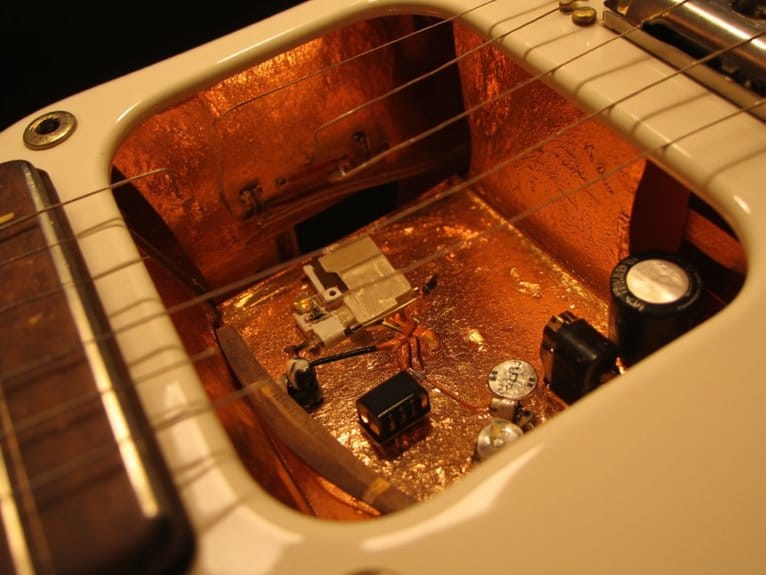What Is the Best Guitar String Number?
The elusive 'best' guitar string number. Newsflash: it's a myth. The perfect string gauge balances tone, playability, and durability, which varies greatly between genres, playing styles, and personal preference. Jazz and blues favor lighter gauges for warmth, while metal and hard rock opt for heavier gauges for aggression. Acoustic players seek a middle ground. But, the ideal string set is more than just a number; it's a synergy of gauge, material, and winding technique. So, what's the best string number? There isn't one. But, let's delve into the intricacies of string selection and discover your perfect blend of tone and playability.
We are supported by our audience. When you purchase through links on our site, we may earn an affiliate commission, at no extra cost for you. Learn more.
Understanding Guitar String Gauges
Guitar string gauges, a pivotal yet oft-misunderstood aspect of tone and playability, refer to the precise measurements of a string's diameter, typically ranging from 0.008 to 0.052 inches for electric guitars and 0.010 to 0.060 inches for acoustic guitars. It's astonishing how many players overlook this essential detail, assuming it's just a matter of 'thin' or 'thick.' Newsflash: gauge matters. A string's diameter affects its tension, flexibility, and, subsequently, the player's ability to fret, bend, and slide. Lighter gauges offer easier playability but may lack sustain, while heavier gauges provide more resistance and a fuller sound. Understanding string gauges is imperative for finding the perfect balance of tone and playability. So, don't be that player who settles for mediocre sound and sore fingers – get acquainted with gauge.
Tone and Sustain Explained
In the intricate dance between a player's fingers and the fretboard, tone and sustain emerge as essential elements, shaped by the complex interplay of string vibration, magnetic pickup response, and player technique. Tone refers to the timbre or 'color' of the sound, influenced by the string's material, gauge, and winding pattern. Sustain, on the other hand, describes the duration of the sound after the initial attack. A string's sustain is affected by its mass, tension, and the player's attack velocity. It's not rocket science, folks, but understanding these fundamental concepts is pivotal in selecting the perfect string for your axe. So, don't be that player who thinks tone and sustain are just buzzwords – get informed and optimize your sound.
String Number for Different Genres
With tone and sustain in mind, the ideal string set for a particular genre hinges on the player's ability to balance these elements with the desired sonic character, which is often genre-specific. For instance, jazz and blues players typically opt for lighter gauges (0.010 – 0.046) to facilitate intricate, nuanced playing and a warmer, more articulate tone. In contrast, metal and hard rock enthusiasts often favor heavier gauges (0.012 – 0.052) to produce a aggressive, chunky sound. Meanwhile, acoustic players may choose a medium gauge (0.011 – 0.050) to strike a balance between clarity and volume. Ultimately, the right string set depends on the player's ability to adapt their technique and tone to the demands of their chosen genre.
Finding Your Ideal String Balance
Ideal string balance is a delicate harmony between tone, playability, and durability, achieved by carefully calibrating string gauge, material, and winding technique to suit individual playing styles and musical demands. It's not a one-size-fits-all solution, unfortunately, so you'll need to do some trial and error to find your sweet spot. Start by identifying your playing style: are you a gentle folk strummer or a face-melting metal shredder? This will help you determine the perfect string gauge and material. Don't be afraid to experiment with different winding techniques either – it can make all the difference in achieving that supreme balance. Remember, there's no substitute for experience, so be prepared to put in the work to find your ideal string balance.
Experimenting With Custom Sets
Custom string sets offer an unparalleled degree of precision, allowing players to cherry-pick individual strings that complement their unique playing style and tone preferences. No more compromising on a pre-packaged set; you get to curate the perfect combination. Want a beefy low-end? Slap on a .052 for the low E. Need a snappy high-end? Try a .010 for the high E. The possibilities are endless, and the results can be game-changing. Of course, this level of customization comes with a price – literally. Be prepared to shell out some extra cash for the privilege of being a tone snob. But hey, if you're willing to put in the work, the rewards can be substantial. So, get experimenting and find your holy grail tone!





